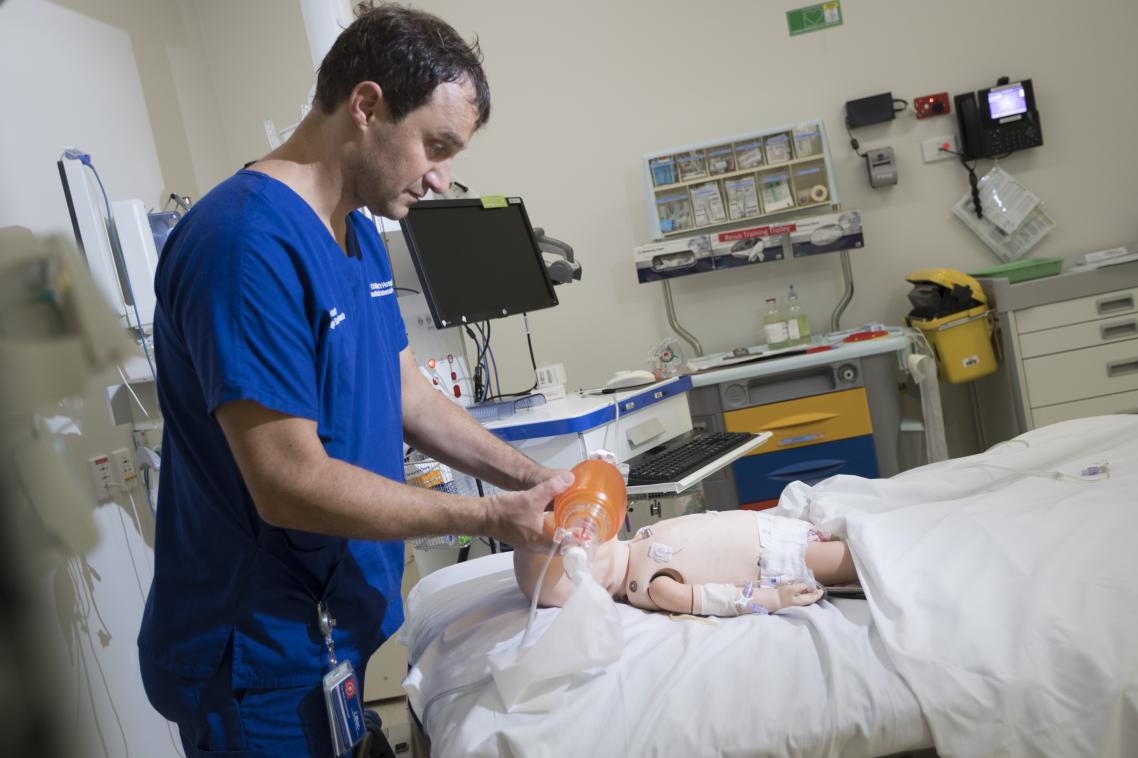Research aims to fine-tune sepsis diagnosis

Work designed to improve diagnosis of one of the leading causes of death in children is under way in Brisbane, led by a University of Queensland researcher.
Mater Research Institute-UQ Associate Professor Luregn Schlapbach said the project was investigating how children were diagnosed with sepsis, a serious disease that can lead to severe illness and to death in some cases.
”The key problem of diagnosis is that sepsis initially often presents similarly to common respiratory infections like pneumonia and other initially mild infections,” Dr Schlapbach said.
He said an expert taskforce revised the definition of sepsis in adults in 2016, and the new definition, called Sepsis-3, referred to a dysregulated host response to infection resulting in organ dysfunction.
“Essentially, this means that sepsis is when a body's reaction to infection becomes so overwhelming that it causes one or several organs to shut down, which can lead to death in the worst cases,” Dr Schlapbach said.
“Usually our immune defence protects our body from infections. However in the case of sepsis, the combination of infection with the response to infection can cause harm to our body.”
Dr Schlapbach said the new definition had not been properly tested and applied to cases of sepsis in children, who were the age group exposed to the highest sepsis burden.
“The Paediatric Critical Care Research Group at Mater Research Institute-UQ and Lady Cilento Children's Hospital has been working with national and international experts to assess how best to translate new adult sepsis definitions to children,” he said.
In two recent studies led by Dr Schlapbach, researchers identified the best scoring systems and a set of rapidly available clinical parameters to improve correct diagnosis of sepsis.
“Based on a multicentre cohort study of more than 2500 patients, our findings support the need to revise paediatric sepsis definition,” Dr Schlapbach said.
“Adapting Sepsis-3 to age-specific criteria performs better than the previous Sepsis-2-based criteria for this age-group.”
Dr Schlapbach said the revision of definitions would lead to more reliable capturing of sepsis in children.
“Sepsis has been recognised as a priority in health, and several states in Australia are in the process of launching initiatives to improve sepsis treatment,” he said.
“Studies suggest the incidence of sepsis in adults and children is increasing, but we are unsure if this is a true increase, or if it relates to clinicians diagnosing sepsis more often.
”In order to assess the effectiveness of these initiatives, robust measuring of sepsis through reliable diagnosis is required.”
A study on prognostic accuracy is published in Intensive Care Medicine, and Defining Pediatric Sepsis is published in JAMA Pediatrics.
Media: UQ Faculty of Medicine, med.media@uq.edu.au, 3365 5133.
Topics
Related articles

Should you consent to your doctor using an AI scribe? Here’s what you should know.

How a drone delivering medicine might just save your life
Media contact
UQ Communications
communications@uq.edu.au
+61 429 056 139
